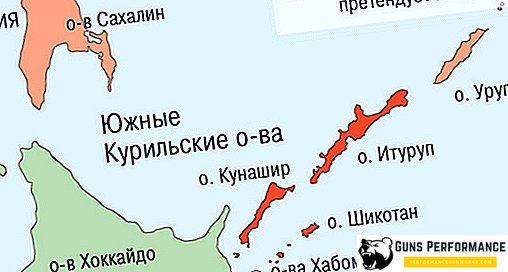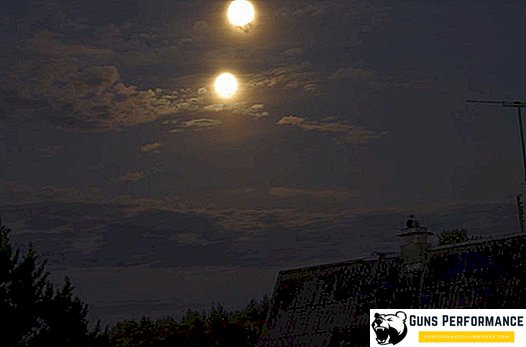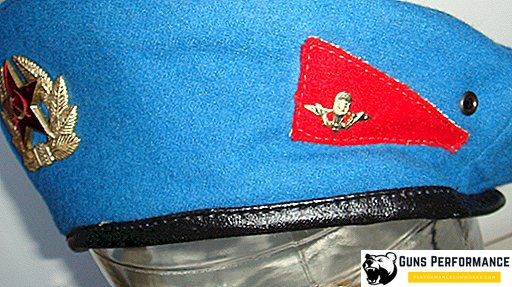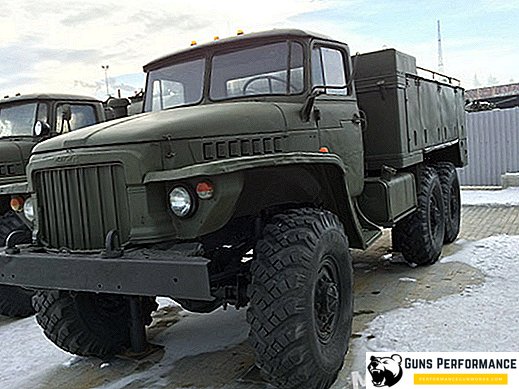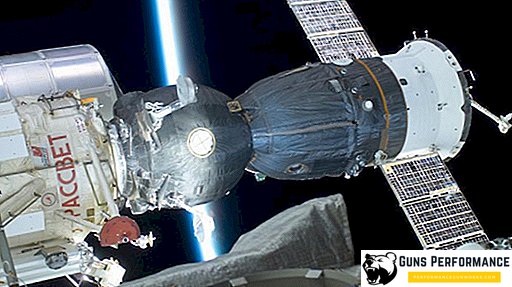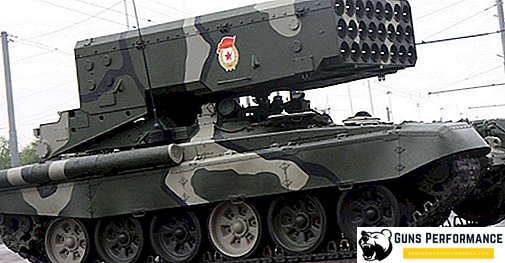Mosin's rifle, also known as the famous trilinek, was the main weapon of the 1917 revolution, as well as the Great Patriotic War. It was the Mosin rifle of the 1891 type that is rightfully considered one of the most famous Russian weapons. Tsarist "trilinek" took part in the Russian-Japanese, and then in the First World War.

The Russian "trilinek", created at the end of the nineteenth century, for many decades remained an effective and reliable weapon for the soldier. She became one of the first domestic models adopted by the army. Today, Mosin rifles can often be seen in museums and in private collections. There are not only Russian modifications of the rifle, but also made abroad. The design and technical characteristics have changed a little, but the principle of the weapon has remained the same.
History of the Mosin rifle
Mosin's rifle was developed during the take-off of technology and science, when the appearance of smokeless powder allowed to go to a reduced caliber. And thanks to the development of weapons technology, it became possible to create a replacement for a single-shot system - a system with store-fed. Naturally, Russia also participated in the development of weapons.

As a result, the choice of the Russian army was represented by two systems of shop-type rifles - the Belgian Leon Nagan, as well as the Russian captain S.I. Mosin. Tests have shown that the Belgian rifle as a whole was better than the Russian. But top management took into account that:
- the Belgian rifle had twice as many misfires;
- Russian rifle was cheaper and easier to manufacture.
The generals eventually compromised: the Mosin rifle was adopted by the Russian army in 1891, but the Nagan 5-round magazine was installed on it. Together with a rifle, a new three-line cartridge (7.62 mm) was adopted. The rifle received the designation "trilinear", and the soldiers called the weapon, as "trilinek". Title three-lane comes from the caliber of the rifle barrel, which is equal to three lines (an outdated measure of length, equal to one tenth of an inch or 2.54 mm)
The name Mosin received this weapon anew only in Soviet times after the modernization of 1930. Russian trilinear rifle abroad was always called "Mosin-Nagan".

Inventor "trilineyki"
The history of the creation of the "trilinek" was not easy. Several designers took part in creating the best magazine rifle in the world, but the most significant contribution was made by Sergei Ivanovich Mosin. The story was unfair to him, and his rifle during his lifetime did not carry the name of the developer, which greatly distressed the designer.
Sergei Mosin was born in the village of Ramon, Voronezh region. He graduated from the military and artillery school, Academy of Artillery. In 1875, Mosin became the head of the tool workshop of the weapons factory in Tula. By 1880, he was already developing single-shot rifles and was an expert in weapons business. In 1894, Mosin became the head of the Sestroretsk Arms Plant.
Mosin carbine cartridges
The cartridge was created by the Russian designer Veltischev, by analogy with the French cartridge from a Lebel rifle, caliber 8x56 mm R. It used:
- blunt shell bullets;
- charge of smokeless powder;
- a sleeve with a protruding lip of the bottle.
The mechanism of the liner with the rim, which has already become obsolete, is adopted due to the low level of development of Russian industry - the tolerances used in this case are less strict.
Adoption of Mosin rifle into service
Weapons of the sample of 1891 (caliber 7.62) It was accepted into service in three versions (in fact, only the barrel length distinguished them):
1. Infantry rifle - the longest bayonet and barrel.
2. Dragoon (cavalry) rifle - barrel length is shorter, and the method of fastening the belt has been changed.
3. Cossack rifle - there was no bayonet and a shorter barrel.
The bayonet for the rifle was adopted by a slightly outdated by that time specimen - a four-sided needle, with a tubular coupling mounted on the barrel. The bayonet had a square cross-section with small valleys on the sides; when disassembling the weapon, the point, sharpened on the plane, could be used as a screwdriver.

The main drawback of the system, which was corrected only in 1938, was that the bayonet should always be worn in the fighting position, attached to the rifle, disassembly was not intended. "Trilineas" were shot (except Cossack) with a sided bayonet. If the disassembly and removal of the bayonet was done, the balance of the weapon was broken - the bullets flew past the target. Moreover, over time, the attachment of the bayonets led to a razbaltyvaniyu, shooting accuracy deteriorated.
Weapons of early models differed by the absence of barrel linings, as well as the barrel, open from above along the entire length. From 1894, wooden upper plates were used, which protected the hands of the shooter from burns. At the time of the adoption of weapons by the Russian enterprises, they could not yet begin producing new rifles, so the initial order was placed in France, in the city of Chatellerault.

Only in 1893-94 did the rifle go into mass production at the Sestroretsk Arms Plant near St. Petersburg, and a little later in Izhevsk and Tula. During the First World War, rifles had to be ordered in the USA in order to compensate for front-line losses.
Specifications Mosin rifle
Mosin rifle sample 1891/1930 - This is a magazine rifle with a sliding bolt when locking with a turn.
Specifications:
- Caliber - 7.62 mm
- Total weight without cartridges with a bayonet - 4.5 kg
- Total length without a bayonet is 114 cm
- The total length with a bayonet is 166 cm
- Slicing shape - rectangular
- Number of grooves - 4
- Magazine capacity - 5 rounds
- The weight of the holder together with the cartridges - 122-132 g.
Shooting can be conducted by regular cartridges with heavy and light bullets, as well as with incendiary, tracer and armor-piercing bullets.

Device
Mosin rifle operation scheme is based on the following structural solutions:
- Locking the barrel is performed on two lugs longitudinally-sliding rotary bolt for the receiver. The stops are in the front part of the shutter, they are in the locked state located in the horizontal plane.
- The cocking of the firing pin, as well as its setting on the combat platoon is performed when the shutter is opened.
- The shutter mechanism is simple in design. The reloading handle is in the middle of the shutter.
- Instead of the fuse, the trigger head (drummer) is used, located behind the bolt.
- The bolt from the receiver is easily removed without the aid of a tool.
- A box-shaped store, with a single row of cartridges, is integral. Due to the fact that the bottom cover of the store is folding, cleaning the store and quick discharge are simplified. The equipment of the magazine is one cartridge at an open gate through the upper window of the receiver or from plate clips for 5 rounds.
- Due to the special features of the store, there is a special detail in the design - a cut-off, which blocks the second and lower cartridges in the store when feeding the upper into the barrel.
- The mechanism involves shutting off the cut-off, if the shutter is fully closed, it gives the opportunity to rise to the next cartridge on the supply line.
Disassembly rifle due to its manufacturability is not difficult.

Mosin Sniper Rifle
The sniper rifle was adopted by the Red Army in 1931. Only the best fighters who had undergone special training were allowed to shoot from it.
Mosin sniper rifle is perfect for point shots at distant single targets. Accuracy of shooting with an optical sight was ensured at a distance of 100-1300 meters. However, due to the optical sight, it was impossible to make the design of the rifle for loading the clip - it was necessary to insert one cartridge each.

The review was acceptable, the sight gave a 3.5-fold increase. Accuracy was provided with the help of the sighting hemp, as well as the sighting thread perpendicular to it.
Upgrades subjected the shutter handle, which extended bent down, so that when recharging the handle shutter does not rest on the scope. For this reason, the loading of the rifle took place only with single cartridges, since the clip was no longer able to be inserted into the slots. Also, the rifle appeared mounting for optical sights. Trigger sensitivity decreased from 2.4 to 2 kg. The sniper rifle did not use a bayonet. Its trunk was narrowed in the output slice by 2-3% (the so-called "choke"). The bullet in such a trunk was better centered and did not take off, but “spitting” the bullet.
Technical characteristics of the rifle:
- caliber 7.62 mm;
- weight 4.27 kg;
- initial bullet speed of 865 m / s;
- length is 1230 mm;
- magazine capacity 5 rounds;
- sighting range of 1300-2000 m;
- rate of fire 10 shots per minute;
- type of loading manual.
Characteristics of sight:
- an increase of 3.5-fold;
- exit pupil diameter 6 mm;
- field of view 4 ° 30 ';
- removal of the exit pupil from the surface of the eyepiece lens is 72 mm;
- resolving power 17 ";
- sight length 169 mm;
- sight weight 0,270 kg.

Advantages and disadvantages of a rifle
For decades, the Mosin rifle was praised by Soviet propaganda as the best weapon, surpassing the rest of the samples of this class. But it must be admitted that she was not perfect in all respects.
The advantages of a rifle:
- cheap and easy to manufacture, maintain;
- available to poorly educated and illiterate soldiers;
- durable and reliable;
- had good ballistic qualities for its time.

Disadvantages rifle:
- a bayonet of outdated design, constantly attached to a rifle;
- the horizontal bolt handle was not very convenient when reloading and carrying a weapon;
- the bolt handle is far away from the butt neck - it contributed to knocking down the sight and slowed down the reloading.
In general, the Mosin rifle is a typical example of the Russian weapon idea, when ergonomics and ease of handling were sacrificed for ease of development and production, reliability and low cost.



